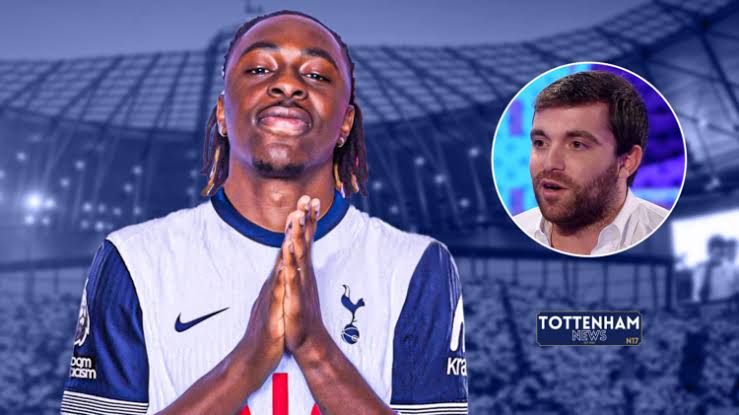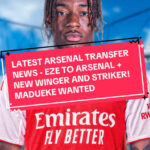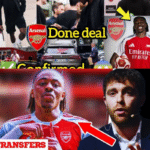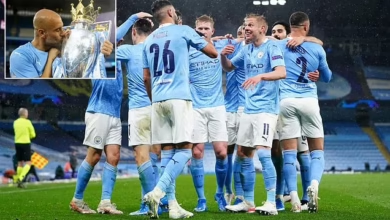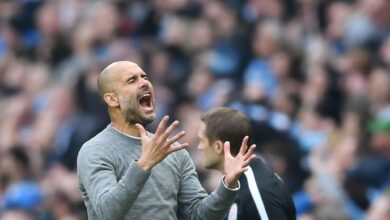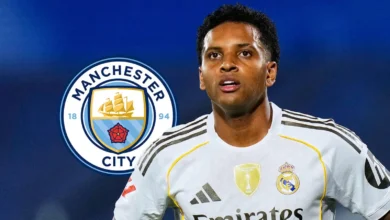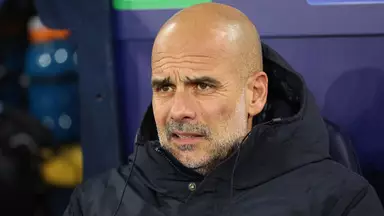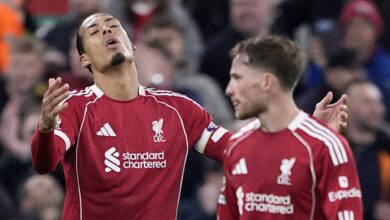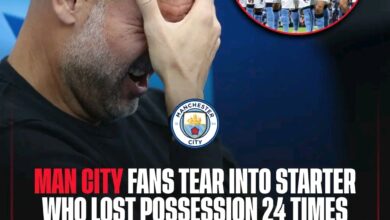Premier League Transfer Window: Drama, Deals, and Deadline Day Approaches
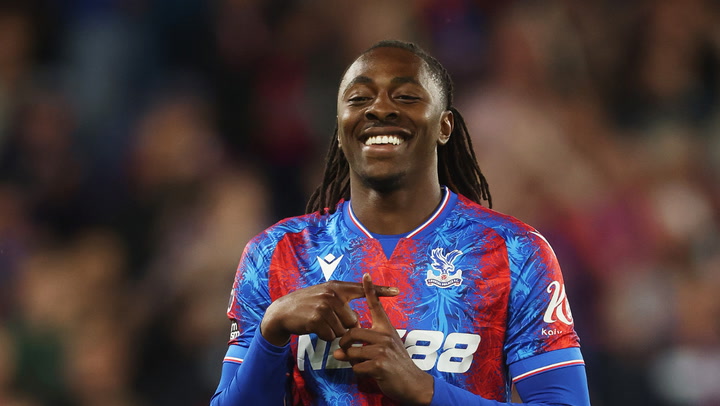
The final weeks of the summer transfer window have delivered some of the most dramatic twists in recent memory, with Arsenal pulling off what many are calling the coup of the window by securing Eberechi Eze from Crystal Palace in a move that has left their North London rivals Tottenham scrambling for alternatives.
The Gunners’ swift action to secure the England international for approximately £67.5 million (including add-ons) represents more than just astute business—it’s a statement of intent that could reshape the balance of power in North London. The timing couldn’t have been more perfect for Arsenal, who moved decisively after Kai Havertz’s knee injury created an urgent need for attacking reinforcement.
What makes this transfer particularly fascinating is how Arsenal managed to hijack Tottenham’s long-standing interest in the player. Spurs had been courting Eze for months, with many expecting the 26-year-old to make the switch to North London eventually. However, Arsenal’s ability to act quickly when the opportunity arose demonstrates the kind of decisive leadership that has become a hallmark of Mikel Arteta’s tenure.
The deal structure itself tells a compelling story. Arsenal essentially matched Eze’s release clause, which had expired for this window on the previous Thursday, showing their willingness to pay premium prices for premium talent. This represents a significant shift in Arsenal’s transfer strategy, moving away from bargain hunting to competing directly with the Premier League’s biggest spenders.
For Crystal Palace, losing Eze represents a significant blow to their ambitions. Oliver Glasner’s public frustration with the club’s transfer window planning has been evident, with the Austrian manager making it clear that the club failed to adequately prepare for what was always a likely departure. His comments about missing the chance to replace Eze early enough highlight the challenges facing mid-table Premier League clubs in the current transfer market
Perhaps no transfer story has been as publicly contentious as Alexander Isak’s ongoing dispute with Newcastle United. The Swedish striker’s explosive statement accusing his club of “broken promises” and “lost trust” has created one of the most public transfer disputes in recent memory, with Liverpool circling as potential beneficiaries.
Isak’s frustration stems from what he perceives as Newcastle’s failure to honor agreements regarding his future. The exact nature of these alleged promises remains unclear, but the striker’s willingness to make his grievances public suggests a complete breakdown in the relationship between player and club.
Liverpool’s interest in Isak makes perfect sense from a sporting perspective. Jurgen Klopp’s successor has been looking to strengthen the attacking options, and Isak’s pace, movement, and clinical finishing would fit perfectly into Liverpool’s high-intensity system. The Swedish international has proven himself capable of thriving in the Premier League, with his goal record at Newcastle demonstrating his ability to perform at the highest level.
However, Newcastle’s valuation of their prized asset creates a significant obstacle. The Magpies are reportedly seeking more than the £110 million Liverpool has been willing to offer, creating an impasse that could extend right up to deadline day. Newcastle’s position is understandable—Isak represents not just a crucial player but also a significant asset whose sale could help balance their books while maintaining competitive squad strength.
The situation has been further complicated by Newcastle’s own transfer ambitions. Eddie Howe’s side needs to balance player sales with squad improvement, making any potential Isak departure contingent on their ability to secure suitable replacements. This complex balancing act explains why Newcastle has been reluctant to accept Liverpool’s initial approaches.
From a broader perspective, the Isak situation highlights the growing power of players in modern football. Social media has given athletes unprecedented ability to communicate directly with fans and apply public pressure to their clubs. Isak’s decision to air his grievances publicly represents a calculated risk that could either facilitate his desired move or permanently damage his relationship with Newcastle.u
Tottenham’s summer transfer window has been characterized by frustration and missed opportunities, with the Eze disappointment serving as the latest setback in what has been a challenging period for the North London club.
The loss of Eze to Arsenal is particularly galling for Spurs supporters, who had watched their club pursue the Crystal Palace star for months. The failure to secure his signature raises questions about Tottenham’s transfer strategy and their ability to compete with their more decisive rivals.
Adding to Spurs’ woes are the injury concerns surrounding key players. Reports suggest Dejan Kulusevski could be sidelined until 2026, while James Maddison’s ongoing fitness issues have left the squad looking thin in crucial areas. These injury problems have made the need for new signings even more urgent.
Tottenham’s response has been to cast their net wide in search of alternative targets. Monaco’s Maghnes Akliouche has emerged as a potential option, while domestic talents like Aston Villa’s Morgan Rogers and Southampton’s Tyler Dibling have been discussed. The variety of players being considered suggests a club still searching for a clear transfer strategy.
Perhaps most tellingly, Tottenham’s reported £67 million bid for Manchester City’s Savinho has reportedly stalled, highlighting the club’s struggles to close deals even when willing to pay significant fees. This pattern of near-misses and failed negotiations has become a recurring theme in Tottenham’s recent transfer windows.
The club’s struggles in the transfer market reflect broader issues with long-term planning and decision-making. While other top-six clubs have developed clear transfer philosophies and rapid decision-making processes, Tottenham often appears to be reacting to circumstances rather than driving them.
Manchester United’s summer has been dominated by their ongoing search for goalkeeping solutions, with the club reportedly considering a move for Paris Saint-Germain’s Gianluigi Donnarumma. This potential pursuit puts them in direct competition with Manchester City, highlighting the limited options available for elite goalkeepers.
The Italian international’s situation at PSG has become increasingly complex, with his relationship with the French champions appearing strained. Donnarumma’s world-class ability and Premier League suitability make him an attractive option for United, who have been searching for long-term solutions between the posts.
However, any move for Donnarumma would require significant financial commitment and complex negotiations with PSG. The French club’s reputation for driving hard bargains, combined with Donnarumma’s substantial wages, could make any deal challenging to complete before the deadline.
United’s goalkeeper situation has been further complicated by ongoing uncertainty about their current options. The club’s willingness to consider such a high-profile signing suggests dissatisfaction with their current alternatives and recognition that goalkeeping could be crucial to their success this season.
Meanwhile, the potential departure of Rasmus Hojlund to Napoli adds another layer of complexity to United’s transfer planning. The young Danish striker’s possible exit would create additional needs in the final third, stretching the club’s resources across multiple positions.
Chelsea’s transfer activity continues to reflect their ongoing squad evolution under new management. The reported pursuit of Brighton winger Julio Enciso and continued interest in Manchester United’s Alejandro Garnacho demonstrates the club’s commitment to building a young, dynamic squad.
The Enciso pursuit makes particular sense given Chelsea’s need for pace and creativity in wide areas. The Paraguayan international’s performances for Brighton have marked him as one of the most promising young talents in the Premier League, making him an ideal fit for Chelsea’s youth-focused recruitment strategy.
The continued interest in Garnacho is more complex, requiring negotiations with a direct rival and a player who has shown flashes of brilliance at Old Trafford. Any deal would likely require significant financial commitment and careful relationship management between the two clubs.
Chelsea’s approach to this transfer window has been markedly different from their previous scattergun strategy. The focus on specific targets and long-term planning suggests a more sustainable approach to squad building, though the ultimate success will depend on how these new signings integrate with existing players.
The departure of Nicolas Jackson to Aston Villa, if completed, would represent another step in Chelsea’s squad evolution. The striker’s exclusion from recent squads following the arrivals of new forwards suggests the club is willing to make difficult decisions to achieve their long-term vision.
This summer’s transfer window has been characterized by several broader trends that reflect the evolving nature of the football transfer market. The willingness of clubs to pay premium prices for proven Premier League talent has created a highly competitive environment where quick decision-making often determines success or failure.
The influence of release clauses has become increasingly significant, with Arsenal’s Eze deal demonstrating how these mechanisms can accelerate transfers when clubs are prepared to meet the specified amounts. This trend toward more structured deal parameters reflects the increasing professionalization of player representation and contract negotiation.
Social media’s role in modern transfers cannot be understated. Isak’s public statement represents just one example of how players now use these platforms to influence their situations. This direct communication between players and fans adds new dimensions to transfer negotiations and places additional pressure on clubs to resolve situations quickly

